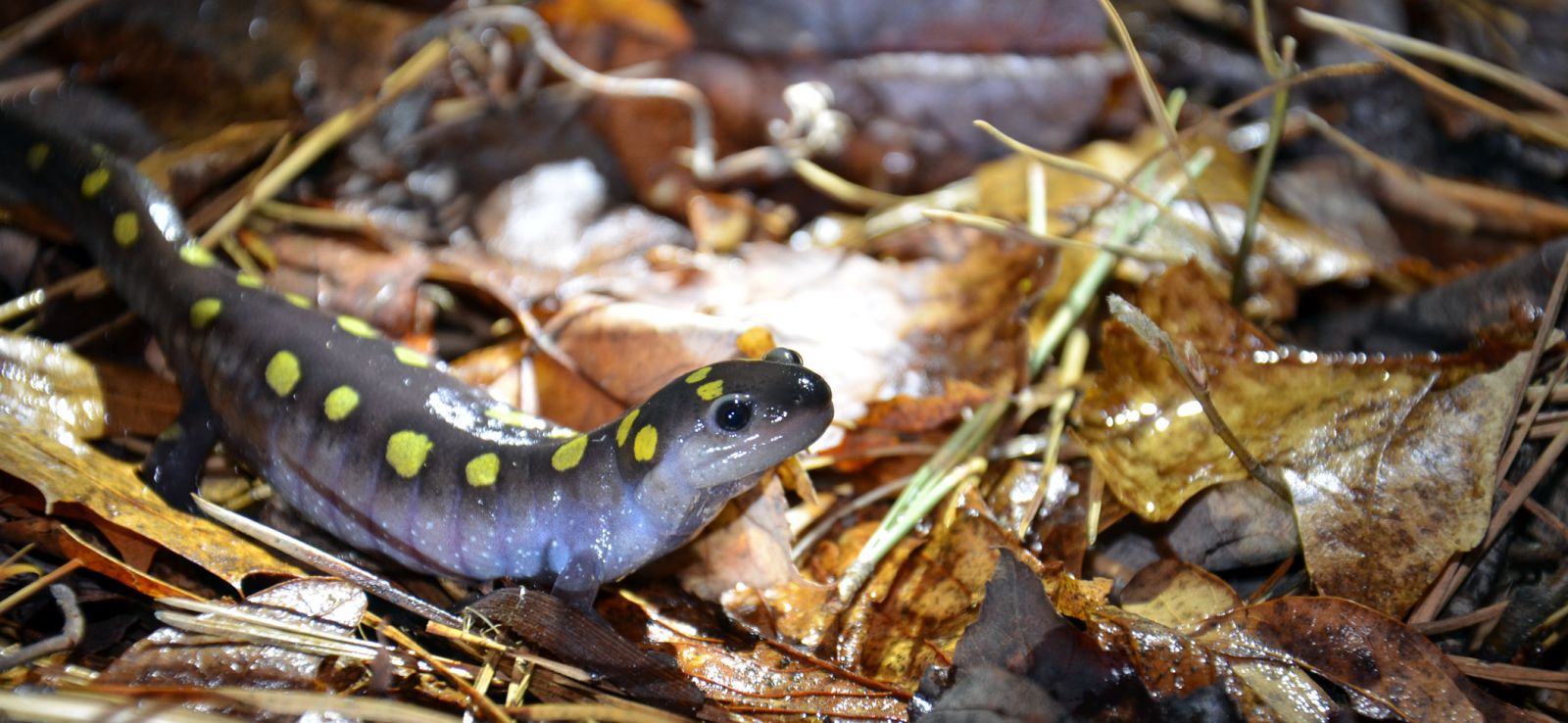Spotted Salamander Symbiosis: Introduction

Phenomenal phenological events are highly sought-after among naturalists, biologists, and other outdoor enthusiasts. Many of these events are at the center of classic learning strategies to teach about the natural world and have guided content and instructional strategies in textbooks and curriculum development. Classic examples include events like the life cycle of the monarch butterfly, flowers coming into bloom, and the migratory patterns of birds.
"Spotted Salamander Migration and Reproduction" Video

Another is the emergence and migration of amphibians in spring to mate and reproduce. In one such example, spotted or yellow-spotted salamanders emerge on a rainy night to travel to vernal pools. They depend on this small body of water, formed by rain and snow-melt, for reproduction. If you happen to be there, you could be witness to a migration of many hundreds of salamanders.
The life cycle and unique symbiosis that follows this migration has been pondered since 1888 and is still under examination today. Spotted Salamander Symbiosis was created to provide an instructional strategy for the classroom that will enhance symbiosis content, reinforce classic biological concepts, and provide examples of project-based learning that merge the field and classroom.
Included in Spotted Salamander Symbiosis are the following:
- A content primer
This document provides background on the life history of the spotted salamander, a summary of scientific discoveries related to the unique symbiosis, and opportunities for project-based learning (download PDF). - Life cycle
The life cycle includes images and video that illustrate the unique symbiosis between the spotted salamander, Ambystoma maculatum, and an algae, Oophila ambylstomatis. The images and video will help bring salamander migration, vernal pool activity and a unique view of egg cases into the classroom. - Instructional Strategies
Ideas for project-based learning that bring together field work and classroom instruction. - Research articles
The focus of these articles is life history and scientific research that demonstrate the unique symbiosis between an algal species and a vertebrate animal.
